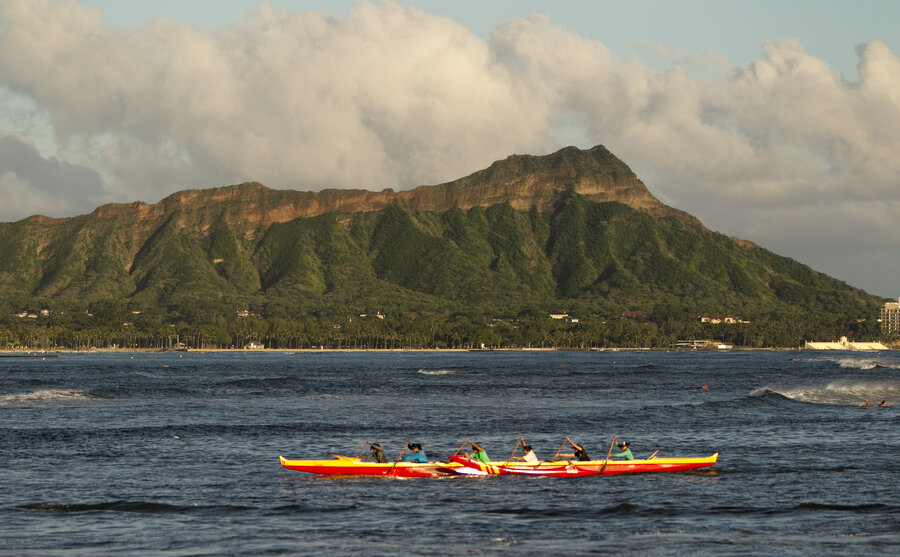How likely is it that a mega tsunami strikes Hawaii?
Loading...
There is a 9 percent chance of a magnitude-9 earthquake off the Aleutian Islands within the next 50 years – and this could spell trouble for Hawaii, say researchers.
Although the Aleutians are off the coast of Alaska, a strong earthquake there would send a mega tsunami directly towards the Hawaiian Islands. A tsunami of this proportion could cost billions of dollars and impact more than 300,000 people.
By studying “paleotsunamis” of the distant past, a team of researchers calculated the probability of such an event.
“Necessity is the mother of invention,” Rhett Butler, a geophysicist at the UHM School of Ocean and Earth Sciences and Technology (SOEST) and lead author of the paper, says in a press release. “Having no recorded history of mega tsunamis in Hawai’i, and given the tsunami threat to Hawai’i, we devised a model for Magnitude 9 earthquake rates following upon the insightful work of David Burbidge and others.”
As Dr. Burbidge found with his tsunami probability assessments for Western Australia in 2008, predicting when and where “a significant tsunami runup might occur” requires either “an extensive catalogue of historical tsunami inundation events, or sophisticated numerical modeling of the shoaling and inundation that occurs when a tsunami reaches the shoreline.”
Compiling an account of historical tsunamis is helpful because, when an earthquake ruptures, it relieves stress on the boundary between two plates, and it is this stress-relieving action that causes a tsunami. Therefore, after a certain area ruptures, a major earthquake is not expected again for some time.
Burbidge and his co-authors were forced to rely on shoaling models – an analysis of how a wave builds as it moves from deep to shallow waters – to predict the future of tsunamis in Western Australia because of inadequate historical assessments. Butler and his co-authors also faced a lack of historical catalogues for Hawaii’s tsunamis, so they built their own.
The authors studied the five largest earthquakes since 1900 and then refined future probability estimates by using evidence from geological layers to predict the power of timing of tsunamis even further in Hawaii’s past.
“We were surprised and pleased to see how well the model actually fits the paleotsunami data,” says Butler in the press release.
The state of Hawaii has already estimated that the damage from such a tsunami would cost $40 billion. So according to the authors’ probability model of a 9 percent risk, this equate to an annualized risk of roughly $72 million.
Despite this probability – and potential price tag – Butler is optimistic. An annualized risk assessment can help Hawaii officials prioritize the human and financial impact of a mega tsunami with other threats.
“This is a new step forward,” Butler tells the Hawaii Tribune-Herald.
There are no known prevention strategies against the forces of Earth’s tectonic plates, but the scientists say knowledge is power.
“The researchers say the study can help officials better plan for these natural disasters and prioritize their emergency preparations,” explains the Hawaii Tribune-Herald. “While existing tsunami warning signs aren’t expected to change, a separate and much larger evacuation area might be set aside for when the ‘big one’ strikes.”








